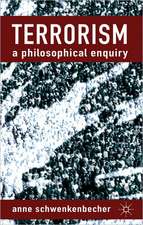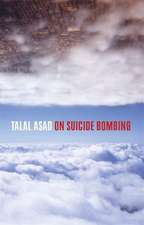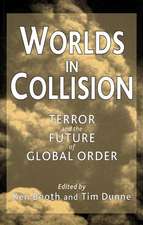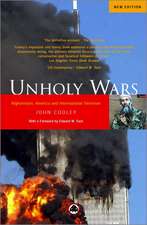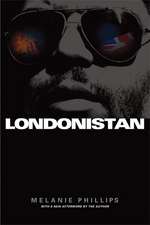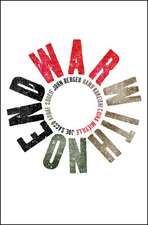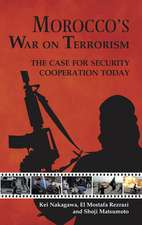Juries, Science and Popular Culture in the Age of Terror: The Case of the Sydney Bomber
Editat de David Tait, Jane Goodman-Delahuntyen Limba Engleză Hardback – 20 dec 2016
Terrorism has become an everyday reality in most contemporary societies. In a context of heightened fear can juries be trusted to remain impartial when confronted by defendants charged with terrorism? Do they scrutinize prosecution cases carefully, or does emotion trump reason once the spectre of terrorism is invoked? This book examines these questions from a range of disciplinary perspectives. The authors look at the how jurors in terrorism trials are likely to respond to gruesome evidence, including beheading videos. The 'CSI effect' is examined as a possible response to forensic evidence, and jurors with different learning preferences are compared. Virtual interactive environments, built like computer games, may be created to provide animated reconstructions of the prosecution or defence case. This book reports on how to create such presentations, culminating in the analysis of a live simulated trial using interactive visual displays followed by jury deliberations.
The team of international, transdisciplinary experts draw conclusions of global legal and political significance, and contribute to the growing scholarship on comparative counter-terrorism law. The book will be of great interest to scholars, students and practitioners of law, criminal justice, forensic science and psychology.
Preț: 642.51 lei
Preț vechi: 755.88 lei
-15% Nou
Puncte Express: 964
Preț estimativ în valută:
122.96€ • 133.52$ • 103.29£
122.96€ • 133.52$ • 103.29£
Carte tipărită la comandă
Livrare economică 22 aprilie-06 mai
Preluare comenzi: 021 569.72.76
Specificații
ISBN-13: 9781137554741
ISBN-10: 1137554746
Pagini: 248
Ilustrații: XIII, 292 p. 14 illus., 6 illus. in color.
Dimensiuni: 148 x 210 x 23 mm
Greutate: 0.48 kg
Ediția:1st ed. 2017
Editura: Palgrave Macmillan UK
Colecția Palgrave Macmillan
Locul publicării:London, United Kingdom
ISBN-10: 1137554746
Pagini: 248
Ilustrații: XIII, 292 p. 14 illus., 6 illus. in color.
Dimensiuni: 148 x 210 x 23 mm
Greutate: 0.48 kg
Ediția:1st ed. 2017
Editura: Palgrave Macmillan UK
Colecția Palgrave Macmillan
Locul publicării:London, United Kingdom
Cuprins
1. Understanding Terrorism Trials.- 2. The Legal Landscape in Terrorism Trials.- 3. Terrorist Trials.- 4. Animating the Bomber.- 5. Gruesome Evidence.- 6. Assessing Unfair Prejudice from Extremist Images in Terrorism Trials.- 7. Displaying the Bomb on the Train.- 8. Research Aims and Methods.- 9.The Sydney Bomber Study.- 10. Images of Interactive Virtual Environments.- 11. How Juries Talked about Visual Evidence .- 12. CSI Effects on Jury Reasoning and Verdicts.- 13. The Effect of Deliberation on Jury Verdicts.- 14. Making Sense of the Evidence.- 15. Conclusions
Notă biografică
David Tait is Professor of Justice Research at Western Sydney University, Australia, and Adjunct Professor at Telecom Paristech, France. His research focuses on how to make justice environments and processes more humane. His recent work includes Fortress or Sanctuary: Enhancing Court Safety by Managing People, Places and Processes (2014), and reviews of the prejudicial effect of the dock in criminal trials.
Jane Goodman-Delahunty is a Research Professor at Charles Sturt University, Australia, and Member of the NSW Civil and Administrative Tribunal. Her recent books include Legal Psychology in Australia (2015), Trends in Legal Advocacy: Interviews with Leading Prosecutors and Defence Lawyers around the Globe (2016) and Juries and Expert Evidence in Criminal Trials (2016).
Textul de pe ultima copertă
Terrorism has become an everyday reality in most contemporary societies. In a context of heightened fear can juries be trusted to remain impartial when confronted by defendants charged with terrorism? Do they scrutinize prosecution cases carefully, or does emotion trump reason once the spectre of terrorism is invoked? This book examines these questions from a range of disciplinary perspectives. The authors look at the how jurors in terrorism trials are likely to respond to gruesome evidence, including beheading videos. The 'CSI effect' is examined as a possible response to forensic evidence, and jurors with different learning preferences are compared. Virtual interactive environments, built like computer games, may be created to provide animated reconstructions of the prosecution or defence case. This book reports on how to create such presentations, culminating in the analysis of a live simulated trial using interactive visual displays followed by jury deliberations.
<The team of international, transdisciplinary experts draw conclusions of global legal and political significance, and contribute to the growing scholarship on comparative counter-terrorism law. The book will be of great interest to scholars, students and practitioners of law, criminal justice, forensic science and psychology.
Caracteristici
Provides transdisciplinary insights on decision-making processes in terrorism trials Addresses ethical questions of interest for justice-related scholars and practitioners Provokes debate about the role of science and technology in jury deliberations




